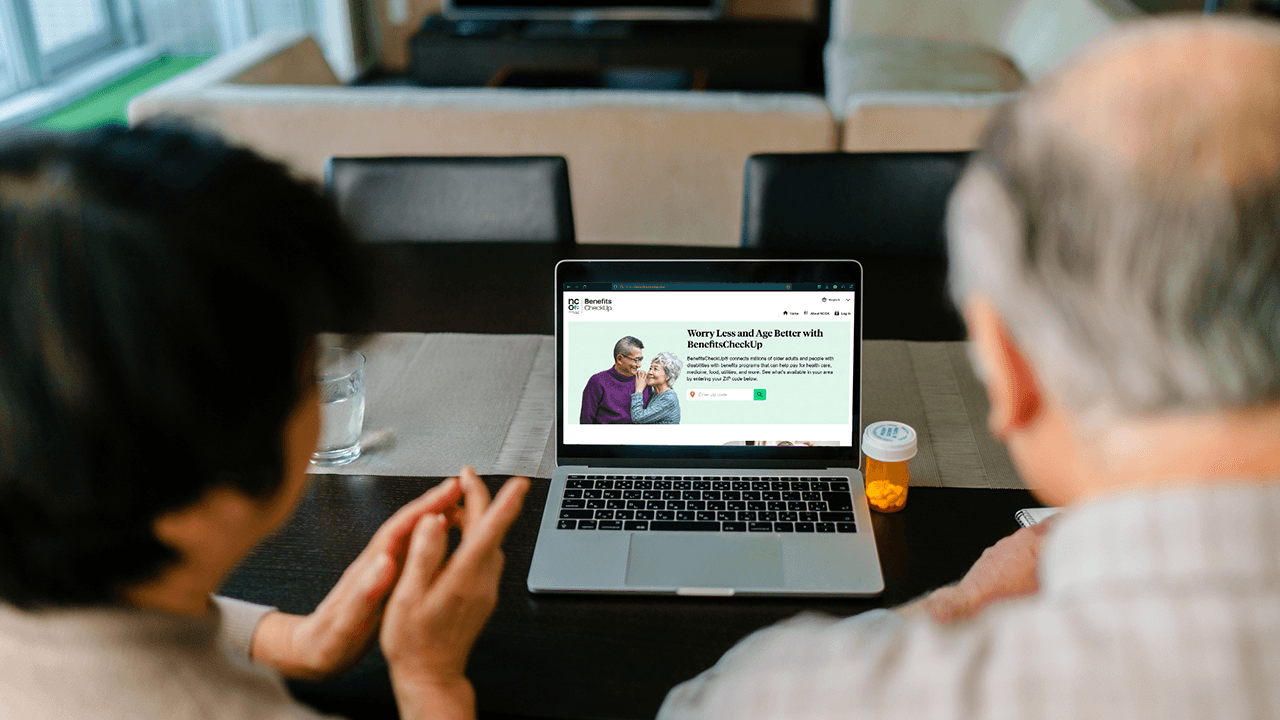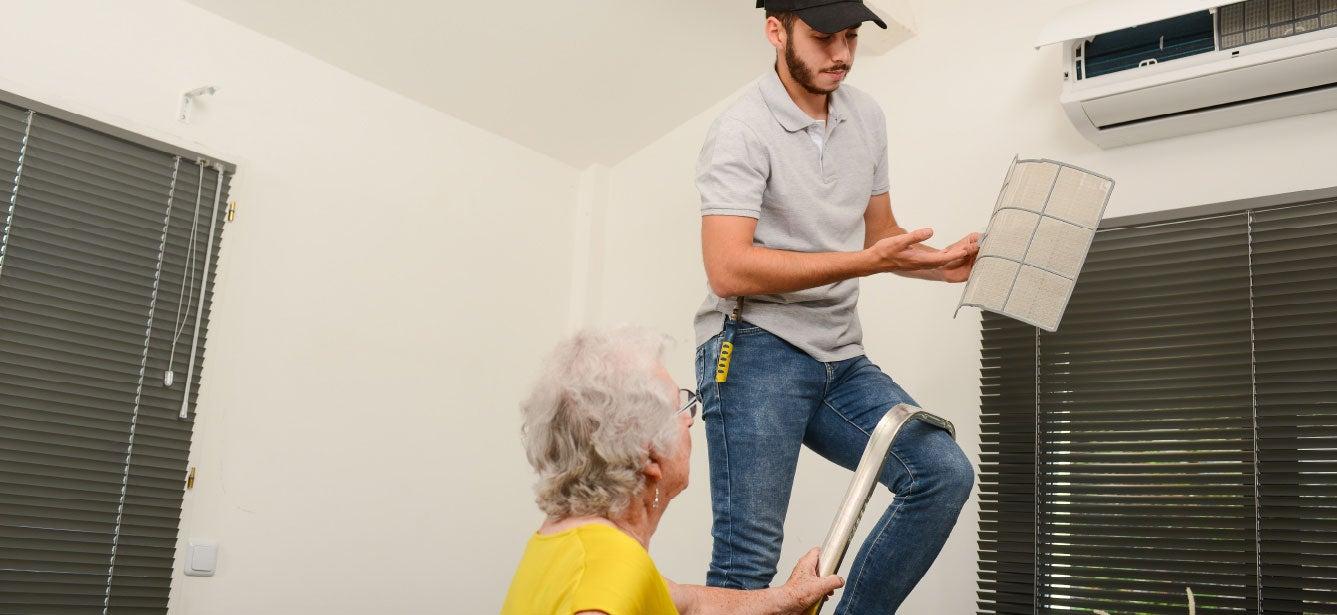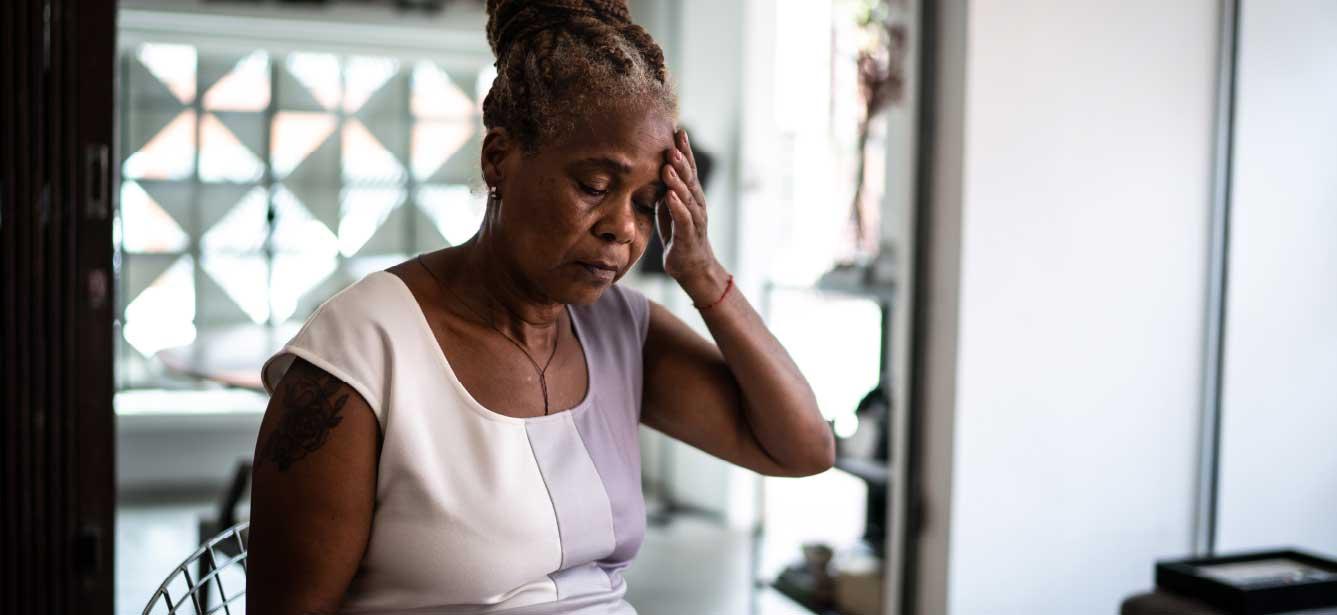Programs to Help Pay for Air Conditioners and More: A Guide for Older Adults
4 min read

Related Topics
If you’re like millions of Americans across the country, you literally sweated your way through the summer of 2023. And its record-breaking heat likely left you asking, “How can I keep cool now—and into the future?”
It’s an increasingly important question during a time when historical norms no longer seem to apply. Already, experts predict that warmer-than-average days will extend into the fall across large swaths of the United States.
“Even if you don’t live in an area affected by scorching heat, it’s still important to regulate the climate within your home,” explained Jessica Johnston, Senior Director of the NCOA Center for Economic Well-Being. “That’s because, as we age, we can become less sensitive to changes in temperature. And that can mean we’re more susceptible to heat-related effects—like dehydration, nausea, lightheadedness, and confusion—that can become life-threatening pretty quickly.”
If you don’t have central air conditioning—or even if you do, but high utility costs mean you can’t afford to turn it on—you may wonder how to keep your home or apartment comfortable. These programs can help.
5 benefits programs that can help you beat the heat
Federal programs
LIHEAP Cooling Assistance
Officially known as the Low-Income Home Energy Assistance Program, LIHEAP provides vital financial support for those who can’t afford their heating and cooling bills. That includes older adults who live on fixed incomes, like Ms. G.
This 76-year-old Salisbury, Maryland resident struggled to pay her monthly utility bills because unexpected prescription drug costs were eating into her already tight budget. After applying and qualifying for LIHEAP benefits, Ms. G no longer worries about maintaining a comfortable and safe temperature in her home. “I am very grateful for the help!” she said.
In some instances, LIHEAP might help pay for an air conditioner, though Johnston cautioned that this particular benefit is fairly restricted.
Each state administers their federally-funded LIHEAP grants separately. To learn more about what assistance is available where you live, contact your local LIHEAP office.
Weatherization Assistance Program (WAP)
The largest program of its kind in the country, the Weatherization Assistance Program (or WAP) helps limited-income households improve their energy efficiency and reduce their energy costs. Weatherization includes improvements that you or your landlord make to protect your living space from the outside elements.
“Homeowners, renters, and mobile-home owners are all eligible to apply for this program,” Johnston said, “and services are completely free if you qualify.”
For more information on WAP, get in touch with your state weatherization administrator.
State programs
Free fans
Some states, including Mississippi and Nebraska, offer no-cost fans under their LIHEAP funding umbrella. Others operate separate programs that distribute free fans to those in need.
Kentucky’s Fan Fair, for instance, provides them to eligible older adults and people with disabilities. North Carolina’s Operation Fan and Heat Relief does the same. And in Texas, Project Cool gives free box fans to San Antonio seniors.
Unfortunately, no comprehensive or centralized nationwide database of free fan programs exists—at least not yet. But if there’s one in your state, your local senior center probably knows about it, Johnston said. If not, try dialing 2-1-1 for further assistance.
Community programs
Targeted campaigns
Many senior centers, nonprofits, and other service organizations offer cooling assistance programs that are generously funded by community donors.
For example, the United Way in Fort Worth, Texas runs such a program, which aims to collect and distribute 100 air conditioners free of charge to 100 vulnerable older adults. In Baton Rouge, Louisiana, a local philanthropist donated 150 air conditioners to the city’s Council on Aging, whose staff will give them away to residents age 60 and over. And Elder Care in Bartlesville, Oklahoma actually lends window air conditioners to older adults through its “Cool Rooms Project.”
“Where one of these programs exist, others are sure to follow,” Johnston explained. Tune in to your local TV or radio news stations—or ask around—for information about any drives to help older adults beat the heat in your area.
Cooling stations
If your living space is too hot, don’t suffer in silence, Johnston concluded. Many cities, towns, and neighborhoods open emergency centers where older adults and other vulnerable people can find air-conditioned respite. These centers might be in the library, a school auditorium, a place of worship, or other public space. If you’re not sure where to look, contact your local Area Agency on Aging for assistance.
Discover other money-savings programs
Of course, paying for utilities is just one piece of your overall financial puzzle. That’s why NCOA offers an easy-to-use online tool that can point you toward additional financial benefits. Visit BenefitsCheckUp.org to browse programs in your area and learn how to qualify. It’s free and you don’t need to create an account to use it.




